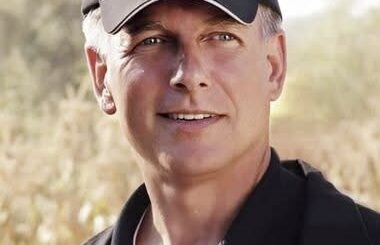The British Royal Family Tree and Complete Line of Succession
Succession to the crown is dictated, first and foremost, by birth order on the royal family tree—although that wasn’t always the case
Editor’s note: Queen Elizabeth II, Britain’s longest-reigning monarch, who sat on the throne for 70 years, has died at 96 years old. In a statement on Sept. 8, 2022, the Royal Family website writes, “The Queen died peacefully at Balmoral this afternoon. The King and The Queen Consort will remain at Balmoral this evening and will return to London tomorrow.” The Reader’s Digest team sends condolences to the royal family and all of Britain at this time as we honor her life and legacy.
While we’ve always been fascinated by the British royal family tree, the world has been paying even closer attention to the House of Windsor since the death of Queen Elizabeth. Here is where Queen Elizabeth is buried. The longest-reigning monarch of the United Kingdom, Elizabeth II had held that position since 1952. But on the afternoon of Sept. 8, 2022, Prince Charlesascended the throne and became King Charles III. That moved Prince William to Charles’s long-held role as the heir apparent and bumped up the rest of the royals in the British line of succession. But who falls where in the rest of the hierarchy, and why?
The short answer is that it’s complicated … but we’ve broken it down for you, complete with the royal rankings and accompanying titles. Below, follow the British line of succession and learn more about Queen Elizabeth II and her family, including her grandchildren, and who might rule the U.K. someday.
King Charles III
His Majesty King Charles III was born Prince Charles Philip Arthur George on Nov. 14, 1948. Find out more about King Charles’ birthday. The first child of Queen Elizabeth II and Prince Philip, he stood as heir apparent to the throne for longer than any other British monarch in history. In August 1969, the year Charles turned 21, he was invested as the Prince of Wales in a lavish ceremony, and in 1981, he married Lady Diana Spencer. The couple went on to have two sons, Prince William Arthur Philip Louis and Prince Henry Charles Albert David (aka Prince Harry).
Charles and Diana divorced in 1996, and Diana died in a tragic car accident one year later. In 2005, Charles married Camilla Parker Bowles, who then became the Duchess of Cornwall. At that time, the royal family announced that Camilla would take the title of Princess Consort when Charles became king. However, on the 70th anniversary of her own accession, Elizabeth publicly expressed her desire for Camilla to have the official title of Queen Consort. And so, King Charles III is now ruling with the Queen Consort Camilla—and royal dogs, Beth and Bluebell—by his side.
Taking the reins from his father, His Royal Highness Prince William is now Britain’s heir apparent, next in line to be king in the royal family tree. Born on June 21, 1982, to Prince Charles and his late former wife, Princess Diana, he assumed the title of the Duke of Cambridge in 2011, when he married Kate Middleton, who became the Duchess of Cambridge. Two years later, in 2013, the Cambridges welcomed their first child, Prince George, followed by Princess Charlotte in 2015 and Prince Louis in 2018.
Upon Charles’s accession to the throne, William automatically took over the Duchy of Cornwall from his father. He will remain both the Duke of Cornwall and Duke of Cambridge until he becomes king. The day after the queen’s death, Charles also officially named William as the Prince of Wales—a title bestowed only on the next in line to the throne. That means the Duchess of Cambridge is now Her Royal Highness The Princess of Wales, Duchess of Cornwall and Cambridge.
Prince George of Wales
Born July 23, 2013, Prince George stands second in line to the throne after his father, Prince William. When William becomes king, George will become the heir apparent, as well as the Duke of Cornwall and possibly also the Prince of Wales.
3. Princess Charlotte of Wales
On May 2, 2015, the Cambridges welcomed daughter Princess Charlotteinto the world. Because the queen ratified the Succession to the Crown Act (more on that below) just two months before Charlotte’s birth, nothing stands to bump Charlotte from her current place at third in the line of succession except the birth of heirs to her brother, Prince George. Since Prince George is at present only 9 years old, that could be a while.
4. Prince Louis of Wales
Prince Louis, born Apr. 23, 2018, is fourth in line to the throne. His position stands to drop when either of his elder siblings, George or Charlotte, have children of their own.
5. Prince Harry, Duke of Sussex
At the time of his birth in 1984, Prince Harry was third in line to the throne. Harry has seen his place in the line of succession drop further with the birth of each of Prince William’s three children. Today, Prince Harry is fifth in line to the throne, despite the fact that he is not currently a working member of the royal family.
After their marriage in 2018, Prince Harry and Meghan Markle’s royal titlessubsequently became the Duke and Duchess of Sussex. The Duke has admitted to feeling marginalized as the “spare.” This may have contributed to Harry’s stepping down from his duties as a senior member of the royal family, though other factors—including the discomfort that the Duchess of Sussex expressed in regard to the royal family and its rules, along with the intense scrutiny by the British press—also played a role. Despite the scrutiny, Meghan Markle and Queen Elizabethstill maintained a respectful relationship. In case you were wondering, Harry is no longer styled with his HRH title, but he is still referred to as the Duke of Sussex.
Master Archie Harrison Mountbatten-Windsor
Born in 2019, the first Sussex child, Archie Harrison Mountbatten-Windsor, was not given a royal title when he was born. Queen Elizabeth was adhering to existing rules regarding royal stylings and titles created by George V in 1917, which hold that the child of any son of the monarch is entitled to be styled as an “HRH” and with the title of Prince or Princess. Though Harry himself was the child of the son of the monarch, Archie did not fall into that category.
However, that changed with Queen Elizabeth’s death and Charles’s ascension to the throne. Now sixth on the royal family tree, young Archie is technically a prince and no longer a “commoner.” It remains to be seen, however, if the royal family will use the HRH styling for him and Lilibet.
Miss Lilibet Diana Mountbatten-Windsor
Born on June 4, 2021, Lilibet Diana Mountbatten Windsor, the Duke and Duchess of Sussex’s second child, is named for her great-grandmother, the late Queen Elizabeth II, whose childhood nickname had been Lilibet, and for her grandmother, the late Diana, Princess of Wales. Lili, as she is known, got to meet Elizabeth II, just weeks before the queen’s death. Now promoted to princess status, Lili stands seventh in line to the throne.
Prince Andrew, Duke of York
Elizabeth II’s third child, Prince Andrew, a younger brother of King Charles, was born a full decade after his older sister, Princess Anne. However, Andrew’s place in the order of succession is ahead of Anne’s because the system of male primogeniture was still in effect at the time of Anne’s and Andrew’s respective births. Until Andrew’s older brother, Charles, began having children of his own, Andrew was next in line behind Charles, like Harry was to William.
Despite Prince Andrew’s apparent “firing” in the wake of recent scandals, he still factors into the British line of succession and currently stands at eighth in line to the throne. Prince Andrew and his ex-wife Sarah, Duchess of York, have two children, Princess Beatrice and Princess Eugenie.
9. Princess Beatrice of York
Born four years after Prince Harry, Princess Beatrice of York, the eldest daughter of Prince Andrew, was once the highest-ranking female royal family member. At the time of her birth, Princess Beatrice was fifth in line for the throne (after Charles, William, Harry and Andrew). That, of course, changed when Princess Charlotte was born in 2015. Today, Princess Beatrice stands at ninth in the order of succession.
10. Sienna Elizabeth Mapelli Mozzi
Princess Beatrice married property developer Edoardo Mapelli Mozzi in February 2020. On Sept. 18, 2021, the newlyweds welcomed their first child, Sienna Elizabeth Mapelli Mozzi. Sienna has no royal title, but she stands at 10th in the line of succession.
11. Princess Eugenie of York
In 1990, Prince Andrew and his wife, Sarah Ferguson, welcome a second daughter, Princess Eugenie of York. Eugenie married Jack Brooksbank in 2018. She currently stands at 11th in the British royal line of succession.
12. Master August Brooksbank
On Feb. 9, 2021, HRH Princess Eugenie and Jack Brooksbank welcomed their first child, a son named August Brooksbank. Though he doesn’t have a royal title, August is 12th in line for the throne.
Prince Edward, Earl of Wessex
Born in 1964, HRH Prince Edward, former Earl of Wessex and now the Duke of Edinburgh, is the youngest sibling of King Charles. He was born before male primogeniture was abolished, and his place in the royal order of succession is after both of his older male siblings and their progeny. However, for the same reason, Edward, like his older brother, Prince Andrew, appears in the royal order of succession before his older sister, HRH Princess Anne.
Edward married Sophie Rhys-Jones, now the Countess of Wessex, in 1999. The pair have two children, Viscount Severn James Mountbatten-Windsor and Lady Louise Mountbatten-Windsor. Interesting fact about Prince Edward: He is the one sibling of King Charles who has not been divorced.
14. James Mountbatten-Windsor, Viscount Severn
Next up in the British royal family tree: Prince Edward’s children. The second-born, James, came along in 2007. Although James is several years younger than his sister, Lady Louise Mountbatten-Windsor, he is higher in the order of succession because he was born prior to the elimination of male primogeniture. James’s title, Viscount Severn, makes him a peer of the king, rather than a commoner like the children of Prince Harry and Princesses Beatrice and Eugenie. It is also within James’s prerogative to take on the title of prince and the HRH styling when he reaches age 18 in 2025. Here’s how other British royal family members got their titles.
Born eighth in line to the throne, James now stands at 14th because he has seven younger cousins who leapfrogged over him, thanks to the rules guiding the order of succession.
15. Lady Louise Mountbatten-Windsor
At the time of Lady Louise Mountbatten-Windsor’s birth in 2003, her parents, Prince Edward and Countess Sophie, announced that Louise would not be styled as a princess, although she would be entitled to be, by virtue of being the child of a son of the queen. Instead, Louise became the first granddaughter of Queen Elizabeth to carry the surname Mountbatten-Windsor from birth.
Like James, Louise has the option of adopting the style HRH Princess Louise if she chooses to do so upon turning 18. Though she was eligible in 2021, her title remains the same. Like her younger brother, James, Lady Louise Mountbatten-Windsor was eighth in line to the throne at birth. But the subsequent birth of a male sibling dropped her down to ninth. Today, Lady Louise stands at 15th.
Princess Anne, Princess Royal
When Princess Anne was born in 1950, her place in the royal family tree was just behind her older brother, Charles. However, Anne’s ranking was immediately usurped by her younger brothers, Andrew and Edward, upon their respective births. Anne has been further displaced with each birth of a child or grandchild of Charles, Andrew and Edward. She is currently 16th in line for the throne. You can see a fictionalized account of Princess Anne and the other British royals in The Crown, of course, and Season 5premieres in November.
Peter Phillips
Born in 1977, Peter Phillips is the first born of all of Queen Elizabeth II’s grandchildren. Nevertheless, King Charles’s eldest nephew now stands at 17th in line to the throne because his connection to the king is through the king’s younger sister, Princess Anne. Plus, because Princess Anne is the daughter of a monarch, as opposed to a son, her children were not entitled by birth to be styled as HRH princes or princesses. When Peter was born in 1977, Queen Elizabeth offered to bestow these royal stylings anyway, but Anne and her then-husband, Captain Mark Phillips, declined.
Peter Phillips, who has embraced his life as a commoner, tends to stay out of the limelight. The managing director of Sports and Entertainment Limited UK, he reportedly didn’t even tell his future wife, Autumn Kelly, of his place in the royal family tree for the first six weeks that the two were becoming acquainted.
18. Savannah Phillips
The first child of Peter and Autumn Phillips is Savannah Phillips, born in 2010. Elizabeth II’s first-born great-grandchild, Savannah is currently number 18 in the British order of succession, immediately after her father, Peter Phillips.
19. Isla Phillips
Born in 2012, Isla Phillips is the second child of Peter and Autumn Phillips. Isla is 19th in line to the throne.
20. Zara Tindall (née Phillips)
Princess Anne’s second child is her daughter, Zara, born in 1981. Zara, like her mother and her grandmother, is an avid equestrian. She even competed in the 2012 Olympics and took home the silver medal. Zara married rugby player Mike Tindall in 2011. They have three children, Mia (born in 2014), Lena (born in 2018) and Lucas Tindall (born in 2021).
21. Mia Tindall
As grandchildren of the Princess Royal, Zara and Mike’s children are in the British line of succession, though much further down on the list. Born in 2014, Mia Tindall is 21st in line to the throne.
22. Lena Tindall
The Tindalls’ second child, daughter Lena, was born in 2018. Like her sister, Mia, she did not lose her place in the order of succession when her brother, Lucas, was born in 2021.
23. Lucas Tindall
Born in March 2021, Lucas Tindall is the third child of Zara and Mike Tindall. This grand-nephew of King Charles is currently 23rd in line to the throne.
How the line of succession is determined
According to the official website of the royal family, “the order of succession is the sequence of members of the Royal Family in the order in which they stand in line to the throne.” That order is determined first and foremost by position in the British royal family tree. From the late 17th century until 2015, “next in line” after the monarch was the monarch’s eldest son, then that son’s eldest son and so on.
Daughters were also in the line of succession but stood to lose their place if a son was born. For example, Elizabeth’s II’s second child was a daughter, Anne, but Anne lost her place as next in line upon the birth of her two younger brothers. The same thing happened to Lady Louise Mountbatten-Windsor, who was bumped from her place in the order of succession when her younger brother, James, was born.
The Succession to the Crown Act
In March 2015, the Succession to the Crown Act went into effect, ending the system of male primogeniture. Less than two months later, Princess Charlotte of Cambridge was born to the Duke and Duchess of Cambridge (Prince William and Princess Kate) and became fourth in line to the throne. Three years later in 2018, when Prince Louis of Cambridge was born, Charlotte retained her place in the line of succession. This marked the first time that a female member of the British royal family tree didn’t lose her ranking after the birth of a male sibling.


